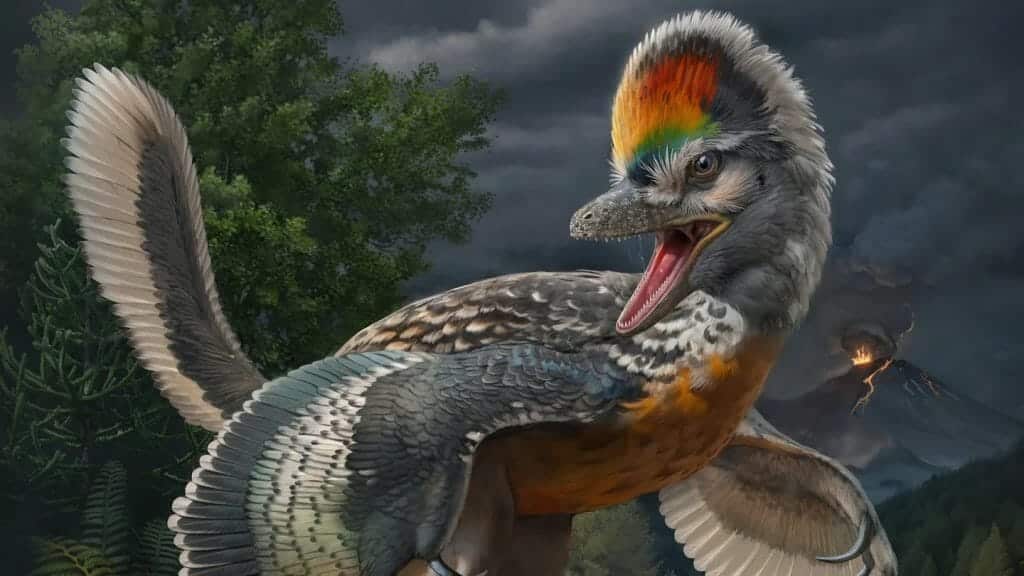In the midst of fossilized remains of turtles and fish in a southeastern China fossil bed, scientists have made a remarkable discovery – the skeleton of a dinosaur with intriguing bird-like characteristics. Estimated to be around 30 million years older than any confirmed bird fossil, this finding has the potential to shed light on the early stages of bird evolution.
Paleontologist Min Wang from the Chinese Academy of Sciences, along with colleagues, conducted a thorough analysis of the newly discovered fossil, which they named Fujianvenator prodigiosus. This pheasant-sized dinosaur, believed to have been feathered, is considered to be a member of the ancestral group avialae, which includes both modern birds and their closest dinosaur relatives.
Early bird ancestor fossils are rare and precious, as they provide crucial insights into the evolutionary journey of birds and the Earth’s ancient environments. The discovery site, known as the Zhenghe Fauna, is named to acknowledge the exceptional diversity and unique composition of the creatures that lived there during this period in Earth’s history.
For decades, Archaeopteryx, a 150-million-year-old dinosaur, has been viewed as a pivotal moment in the evolution of modern birds. However, recent research has challenged this perspective, suggesting that Archaeopteryx shares more similarities with the Deinonychosauria group than with Avialae. With few convincing bird-like fossils from this era, researchers have been left to speculate about the appearance of early birds.
Fujianvenator, emerging just a few million years after Archaeopteryx, could hold some of the answers, straddling the boundary between ancient dinosaurs and more contemporary birds. Notably, its pelvis features characteristics more akin to less bird-like dinosaurs, such as the four-winged Anchiornis, suggesting that the transition from arms to wings in bird ancestors began quite early in their evolutionary history.
Fujianvenator’s elongated lower hindlimbs raise questions about its lifestyle. It could have been a long-legged swamp dweller or a high-speed runner. While further fossil discoveries are needed to definitively determine its behavior, the identification of a potential swamp avialan is a significant breakthrough. Most previously discovered avialans showed traits indicative of tree-dwelling.
This research opens new avenues for understanding the diversity and adaptations of early bird ancestors, offering a glimpse into the complex journey of avian evolution and their role in Earth’s ancient ecosystems.
The discovery of Fujianvenator prodigiosus in the Zhenghe Fauna of southeastern China provides a fascinating piece of the puzzle in our quest to understand the evolution of birds. This unique find challenges our previous assumptions about the early stages of avian development and the pathways taken by ancient bird ancestors.
What makes Fujianvenator particularly intriguing is its divergence from the main trajectory of avian evolution. While the forelimbs of Fujianvenator show similarities to the transition towards typical bird limb proportions, its hindlimbs display a remarkable departure from this pattern. This suggests that Fujianvenator pursued a different evolutionary path, branching off from the line that eventually led to modern birds.
The elongated lower hindlimbs of Fujianvenator point to specific adaptations for its way of life. While the precise details of its feet remain unclear, these limb proportions are commonly associated with either wading in water or high-speed running. This opens up intriguing possibilities for Fujianvenator’s ecological niche.
The idea of a potential swamp avialan is especially tantalizing, as most previously discovered avialans exhibited features suited for a tree-dwelling lifestyle. If Fujianvenator did indeed inhabit swampy environments or was a swift runner, it underscores the remarkable diversity of early avian adaptations.
This discovery also highlights the importance of continued paleontological research and the significance of fossils like Fujianvenator in unraveling the mysteries of our planet’s past. Each new find enriches our understanding of the complex interplay between ancient creatures and their environments, shedding light on the remarkable story of life on Earth.
As scientists delve deeper into the fossil record and uncover more secrets of the distant past, we can anticipate further revelations that will reshape our understanding of evolution, ecology, and the astonishing diversity of life that has flourished on our planet over millions of years. Fujianvenator prodigiosus is a testament to the enduring wonder and fascination of paleontology, where each discovery invites us to rewrite the narratives of our planet’s history.






